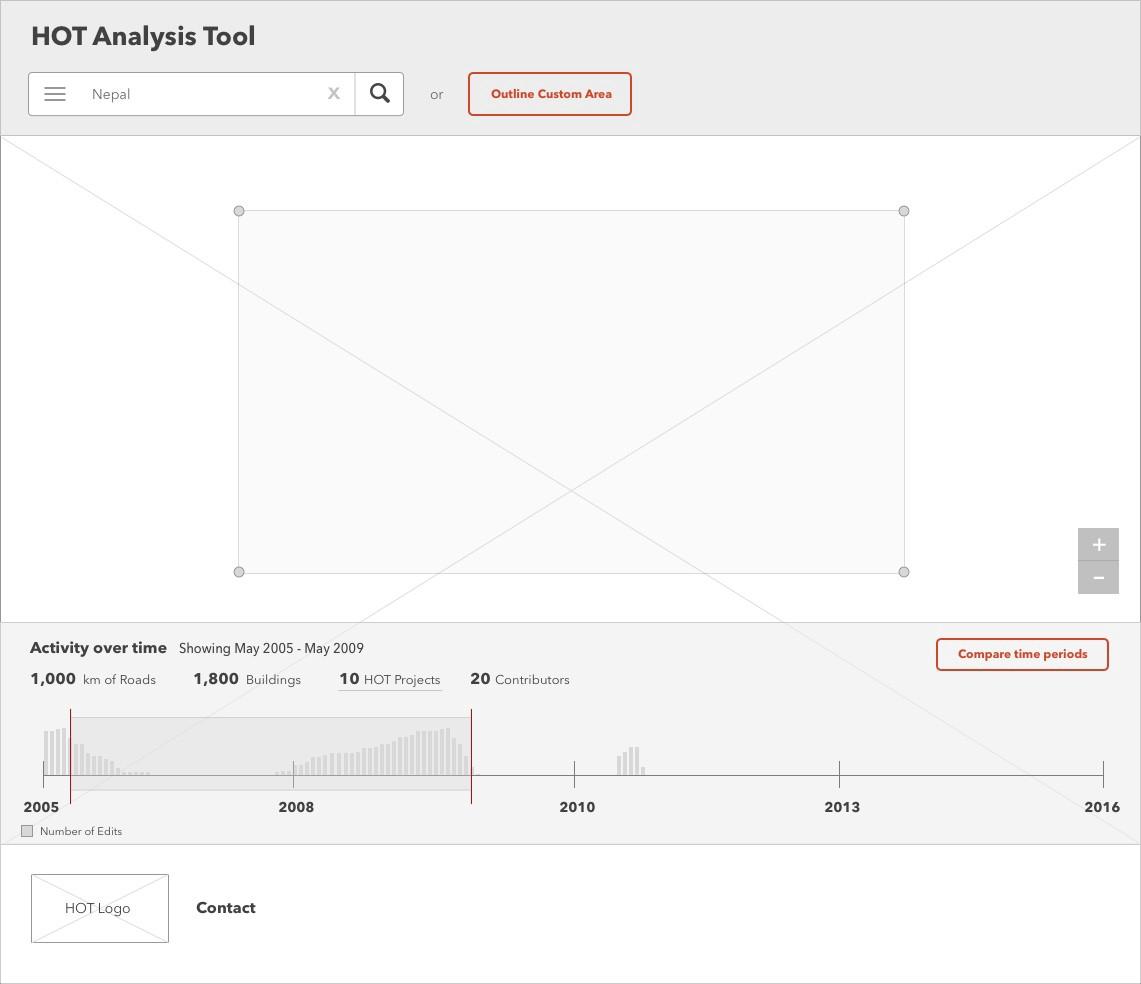To build a successful product, you must deeply understand your users and their needs. Unfortunately, when timelines are tight, user research is often what gets dropped or simply forgotten about, right when it is needed the most. Doing even a little bit research up front can avoid costly delays later in the process, saving time and resources, resulting in a better product.
We recently put this theory to the test while working with the Humanitarian OpenStreetMap Team (HOT) on their OSM Analytics prototype. HOT came to us to help them better understand what their users really wanted and needed, to inform what they should build, from the beginning. Because of their short timeframe, we condensed our research process, conducting user research, iterating and then testing to verify assumptions, within a weeks time.
For our initial UX research phase, we spent an intensive day with the team at HOT helping them think through their measurable goals for the product, the kind of people they hoped would use their tool, and finally, the kind of content that would achieve their goals as well as those of their users. Doing this type of analysis up front, not only ensured that we were all driving towards the same goal, but also focused us on features and design decisions that were right for the product, instead of suggesting whatever is new and flashy. The result by the end of the day — a simple, testable prototype.

The second step of the process was to get our prototype in front of real users. Testing is invaluable because it provides the project team with fast feedback, allowing them to make more informed changes early on. For OSM Analytics, we tested our prototype and verified our assumptions by using our preferred method, moderated usability testing. We asked a number of relevant users to perform tasks on the prototype, to ensure that what we built matched their expectations. Their responses quickly showed us what worked and what didn’t within the product, allowing us to fix big issues and more confidently continue building. Also, hearing directly from users how they’d like to use the tool, gave us and the HOT team insight into what future phases of the product should look like.

Within the week we had for this project, we not only gained an understanding of HOT’s users wants and needs, but also learned what worked for the product and what didn’t. This all allowed us to iterate our way to a more user centered design showing the value of doing UX research and testing, no matter the timeline.
If you haven’t tried OSM Analytics yet, check it now. Join in or watch further development of the tool on GitHub.
What we're doing.
Latest
